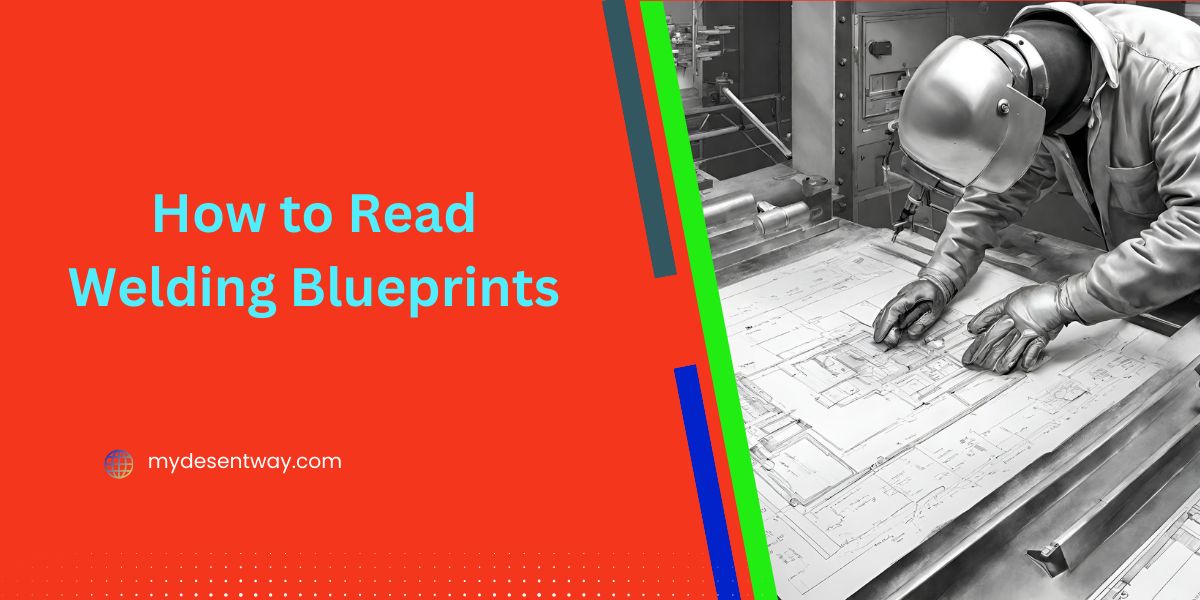Table of Contents
Feeling puzzled by welding blueprints? Don’t worry! Learning how to read welding blueprints is key for any welder, whether you’re new to the craft or a seasoned pro.
In this comprehensive guide, we’ll unravel the mysteries of welding blueprints, providing you with practical tips, tricks, and insights to read them like a seasoned pro!
1. Decoding the Blueprint Basics
Before we dive into the nitty-gritty details, let’s start with the fundamentals. Welding blueprints are visual representations of weld assemblies, showcasing crucial information such as dimensions, weld types, and material specifications. Here’s how to decode the basic elements:
- Blueprint Symbols: Familiarize yourself with common welding symbols, including fillet welds, groove welds, and weld types like plug or slot welds. Each symbol conveys specific instructions for the welder.
- Dimensions and Measurements: Pay close attention to dimensions indicated on the blueprint. These measurements dictate the size and placement of welds, ensuring accuracy in the final product.
- Material Specifications: Understand the materials involved in the welding project, including base metals and filler materials. Material specifications provide vital information for selecting appropriate welding techniques and consumables.
Welding blueprints often feature complex diagrams and multi-view drawings. Don’t let the intricacy overwhelm you! Here’s how to navigate these diagrams like a seasoned pro:
- Multi-View Drawings: Take advantage of multi-view drawings to visualize the weld assembly from different angles. Pay attention to views such as top, side, and front, as they offer valuable insights into the assembly’s structure and dimensions.
- Sectional Views: When faced with a sectional view, imagine slicing through the assembly to reveal internal details. This perspective helps in understanding hidden features and weld configurations within the structure.
- Scale and Proportion: Use the blueprint’s scale to gauge the relative sizes of components and welds. Pay attention to proportional relationships between different parts of the assembly to ensure accurate fabrication.
3. Cracking the Code: Interpreting Welding Symbols
Welding symbols are the language of welding blueprints, conveying instructions with precision and clarity. Let’s delve into the art of interpreting these symbols effectively:
- Understanding Symbol Elements: Each welding symbol consists of various elements, including the reference line, arrow, and tail. Familiarize yourself with these components to decipher the meaning of each symbol accurately.
- Interpreting Weld Types: Different weld symbols represent distinct weld types and configurations. Whether it’s a fillet weld, groove weld, or plug weld, understanding the symbol’s implications is crucial for executing the weld correctly.
- Additional Information: Pay attention to supplementary symbols and annotations accompanying welding symbols. These provide additional instructions related to weld size, depth, and other critical parameters.
4. Practical Tips for Mastery
Reading welding blueprints is as much about practice as it is about theory. Here are some practical tips to hone your blueprint reading skills:
-
Hands-On Practice: Nothing beats hands-on experience when it comes to mastering blueprint reading. Get your hands on a variety of welding blueprints and practice interpreting them regularly.
- Seek Guidance: Don’t hesitate to seek guidance from experienced welders or instructors. They can offer valuable insights and clarification on complex blueprint elements.
- Stay Updated: Keep abreast of industry standards and advancements in welding technology. Understanding the latest trends and techniques will enhance your proficiency in reading modern welding blueprints.
Are welding symbols standardized across all blueprints?
Yes, welding symbols follow standardized conventions outlined by organizations such as the American Welding Society (AWS) and International Organization for Standardization (ISO).
Can I use software to assist in reading welding blueprints?
Absolutely! Many CAD software programs offer features for viewing and interpreting welding blueprints digitally, providing additional clarity and ease of navigation.
How can I improve my blueprint reading speed?
Practice is key to improving reading speed. Start with simple blueprints and gradually work your way up to more complex ones. Over time, you’ll develop faster comprehension and interpretation skills

